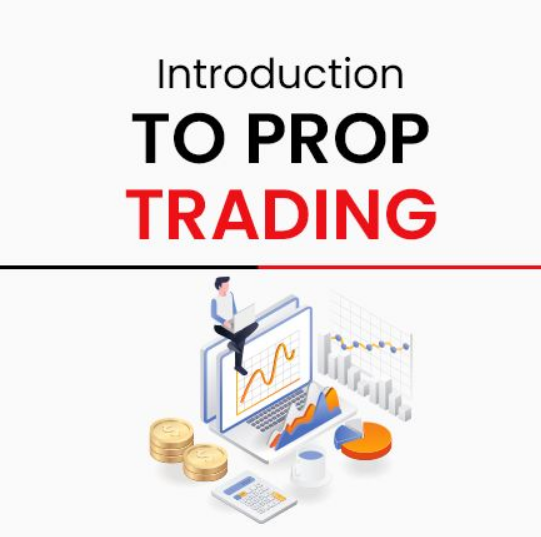Proven Benefits of Prop Trading: Advanced Strategies for Success
Proprietary trading is not just a career—it’s a dedicated pathway to financial empowerment, strategic innovation, and dynamic risk management. This comprehensive guide dives deep into the benefits of prop trading, providing actionable insights, real-world case studies, and advanced tool comparisons to help both aspiring and seasoned professionals excel in a competitive environment.
Prop Trading: An Overview of Its Key Benefits
Prop trading enables traders to leverage firm capital to maximize their returns, reducing personal financial risk while expanding access to substantial funds. With profit-sharing models and access to advanced trading tools, individuals can focus on honing their strategies without the typical limitations of personal capital. Below, we explore how prop trading delivers on these advantages and truly sets its practitioners apart.
Reducing Personal Financial Risk
Unlike retail trading, where individual capital is at stake, prop firms absorb the primary financial risk. This risk-transference allows traders to experiment with bold strategies without the constant fear of personal financial loss. Furthermore, many firms have stringent risk management protocols in place, incorporating stop-loss orders and position sizing metrics that safeguard both the trader’s and the firm’s interests.
Access to Substantial Trading Capital
Prop trading offers access to significant funding, enabling traders to place larger positions and diversify their portfolios. This capital inflow is crucial for leveraging advanced trading strategies that require scale, thereby creating opportunities for higher profit margins and accelerated career growth.

Advanced Backtesting and Automation Tools in Prop Trading
One of the critical success factors in prop trading is the utilization of automated backtesting tools. These tools allow traders and risk managers to refine strategies, minimize common pitfalls such as overfitting and look-ahead bias, and ensure strategies are robust across varying market conditions.
Key Backtesting Concepts
When developing and refining trading strategies, several advanced backtesting concepts must be understood and implemented:
- Overfitting and Data Snooping: Avoiding the trap of curve-fitting historical data by emphasizing out-of-sample testing and walk-forward optimization.
- Walk-Forward vs. Traditional Backtesting: Walk-forward analysis not only tests the model on historical data but also continually recalibrates as new data emerges, leading to more reliable performance metrics.
- Integration with Forward Testing: Seamless transition from paper trading to live deployments is crucial. Automated reports and risk metrics help in monitoring key performance indicators such as the Sharpe ratio, drawdown, and profit factor.
- Data Quality and Sourcing: Reliable historical data—from tick data to bar data—is essential. Adjusting for missing data, corporate actions, and market events ensures that backtesting reflects realistic trading scenarios.
Comparison of Popular Automated Backtesting Tools
Choosing the right tool is pivotal. Below is a detailed comparison of some widely recognized platforms used by prop trading firms:
| Tool | Backtesting Features | Data Quality & Integration | Pricing & Use Cases |
|---|---|---|---|
| TradingView | Event-driven testing, automated indicator scripts, Pine Script customization. | High-quality historical data, real-time feeds, API integration available. | Free and premium tiers; ideal for both retail and prop firm strategies. |
| MetaTrader 5 | Robust strategy tester with optimization capabilities, handles commissions and slippage. | Comprehensive asset coverage; supports broker integration and third-party analytics. | Widely accessible; fits both individual traders and team setups in prop firms. |
| NinjaTrader | Advanced backtesting with walk-forward testing and scenario analysis. | Strong integration with data providers, API for custom tools, robust reporting. | Flexible pricing, multiple licenses, scalable for institutional use. |
These platforms not only automate the backtesting process but also enhance the analytical depth by allowing automated parameter optimization and detailed performance report generation.
Case Studies: Real-World Success in Prop Trading
Case Study 1: A mid-sized prop trading firm faced repeated challenges with overfitting in their proprietary strategies. By integrating MetaTrader 5‘s advanced backtesting and real-time optimization features, the firm was able to revamp its strategies. The changes included walk-forward analysis and rigorous out-of-sample testing, which resulted in a 15% improvement in the Sharpe ratio while reducing maximum drawdown by 5% during volatile market periods.
Case Study 2: A budding trading team in a prop firm leveraged NinjaTrader to automate their algorithm testing process. Facing hurdles with data quality and consistency, they implemented a comprehensive data-cleaning protocol paired with automated stress testing. Within three months, the team observed a significant reduction in iteration times and enhanced risk management, verified by improved profit factors and faster strategy deployment cycles.
Implementing Advanced Backtesting into Your Prop Trading Strategy
To realize the full benefits of prop trading, it’s essential to integrate advanced automated backtesting into your trading methodologies. This involves more than just running historical data—it’s about identifying pitfalls, optimizing parameters, and ensuring robust compliance with regulatory frameworks.
Essential Steps for Robust Backtesting
- Define Your Strategic Parameters: Clearly outline the metrics such as maximum drawdown, Sharpe ratio, and profit factor to benchmark performance. Establish your criteria before beginning any backtesting phase.
- Gather and Clean Data: Ensure your historical data is detailed and free from gaps or anomalies. Use vetted sources like Interactive Brokers and QuantConnect for reliable feeds.
- Utilize Walk-Forward Analysis: Unlike static historical backtesting, walk-forward analysis allows your model to adapt to changing market dynamics, reducing the risk of overfitting.
- Combine Forward Testing: After automated backtesting, implement paper trading to validate your strategies in live market conditions. Monitor performance metrics closely, adjusting parameters as needed.
- Integrate Regulatory Insights: Stay abreast of key regulations like MiFID II, ESMA rules, and NFA requirements. Incorporate compliance checkpoints within your automated tests to ensure your strategies meet legal standards.
Expert Guidance: Advanced Tips for Prop Trading Success
Pro Tip: Always conduct scenario-based stress testing. For instance, simulate extreme market movements to observe your strategy’s performance under pressure. This not only helps in verifying the robustness of your trading model but also ensures that your risk management protocols are effective.
Industry Insight: A growing trend among prop firms is the integration of API-based broker connectivity with platforms such as Interactive Brokers and Sierra Chart. This seamless integration allows for rapid trade executions and dynamic risk adjustments—critical for maintaining a competitive edge.

Practical Tools, Techniques, and Next Steps
For traders looking to elevate their strategies, it’s essential to leverage the right mix of advanced backtesting technologies and expert methodologies. Below, you’ll find actionable tips to transition from theoretical backtesting to real-world gains:
Code Snippet Example: Python with Backtrader
Below is an example of how you can utilize Python and Backtrader for automated strategy testing:
import backtrader as bt
class TestStrategy(bt.Strategy):
def __init__(self):
self.sma = bt.indicators.SimpleMovingAverage(self.data.close, period=15)
def next(self):
if self.data.close[0] > self.sma[0]:
self.buy()
elif self.data.close[0] < self.sma[0]:
self.sell()
cerebro = bt.Cerebro()
cerebro.addstrategy(TestStrategy)
data = bt.feeds.YahooFinanceData(dataname='AAPL', fromdate=datetime(2018, 1, 1), todate=datetime(2020, 1, 1))
cerebro.adddata(data)
cerebro.run()
cerebro.plot()
Internal Linking Suggestions
For further insights, consider reading our detailed guides on Advanced Risk Management in Prop Trading or our comprehensive review of Top Backtesting Tools for Traders to deepen your understanding.
Conclusion and Next Steps
Prop trading offers significant benefits by reducing personal financial risk and providing access to advanced trading tools and substantial capital. With the guidance provided in this post—from backtesting best practices to advanced automation and regulatory compliance—traders can elevate their strategies and achieve measurable performance improvements.
As a next step, we recommend downloading our Risk Management Checklist, which outlines key performance metrics, regulatory check-points, and strategy validation steps essential for prop trading success. Moreover, consider joining our upcoming webinar on advanced backtesting techniques to interact with industry experts directly and get your questions answered.
For ongoing success, stay informed about new trading technologies, market regulations, and innovative risk management practices. As of October 2023, these strategies remain at the forefront, ensuring that your prop trading practice not only stays profitable but also compliant and resilient under various market conditions.
Ensure to subscribe to our newsletter for ongoing expert guidance, webinars, and exclusive access to trading tools updates.







